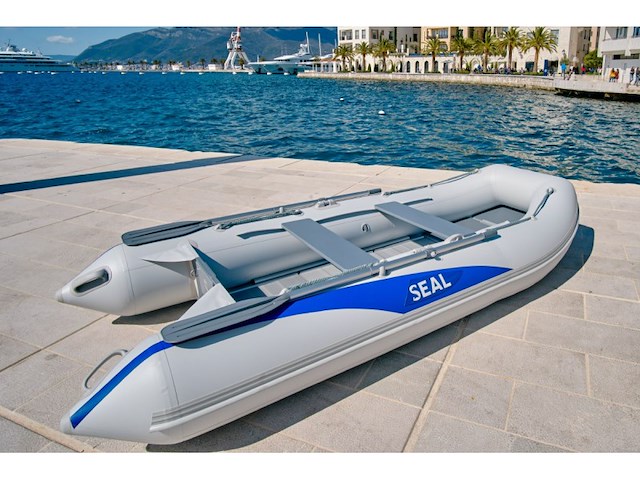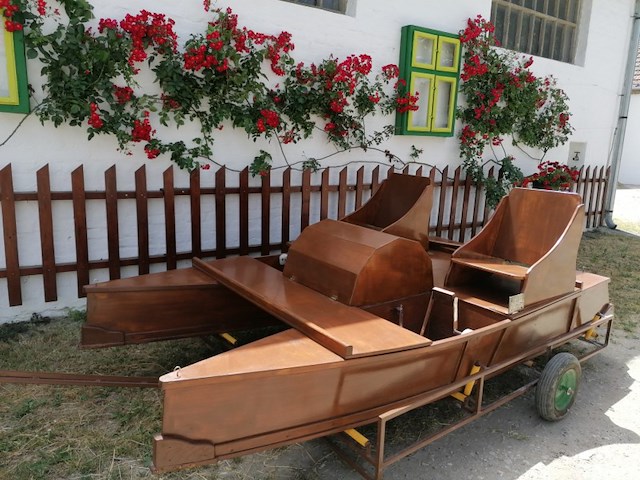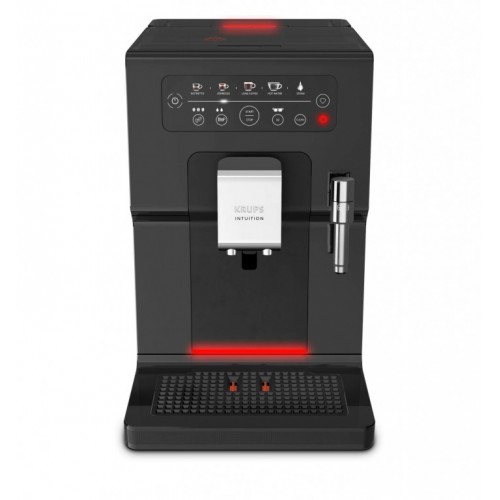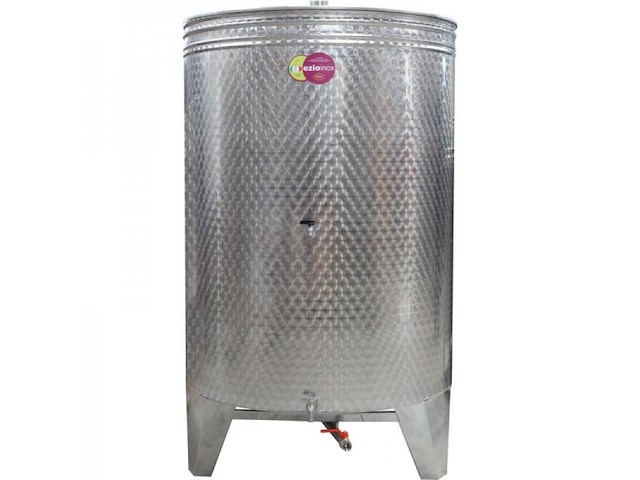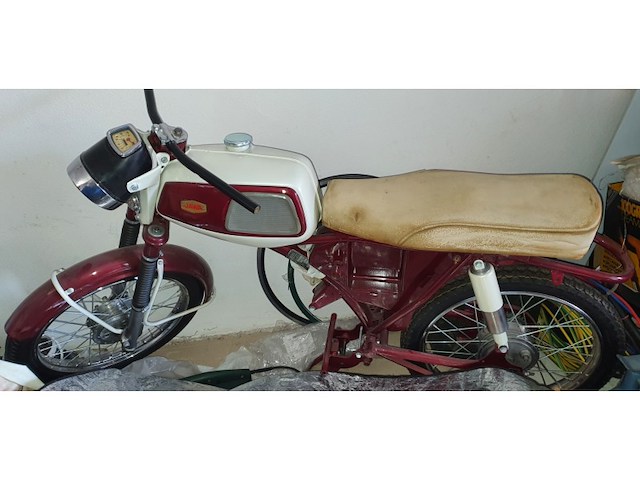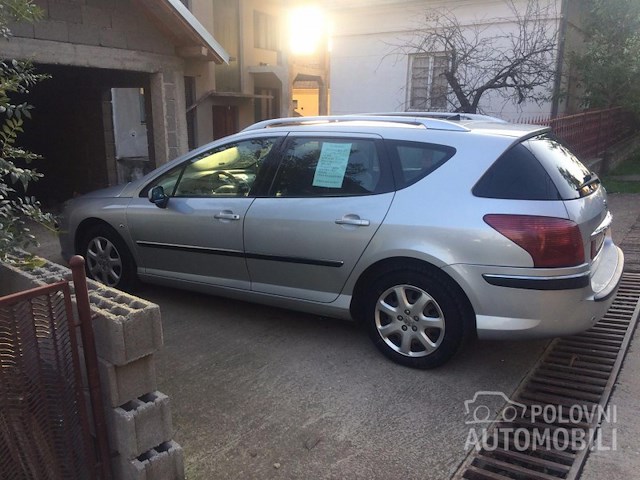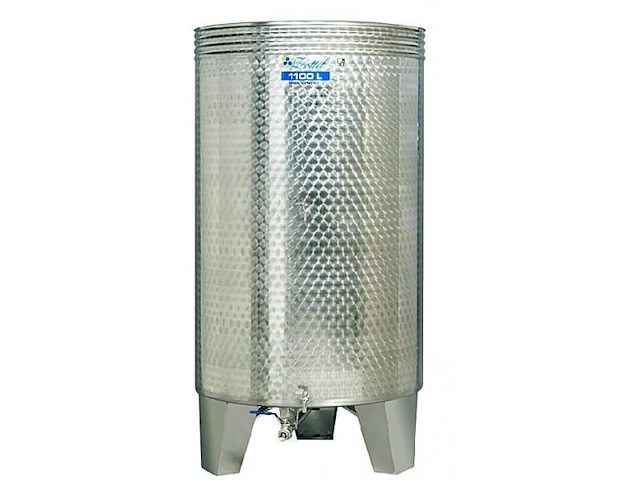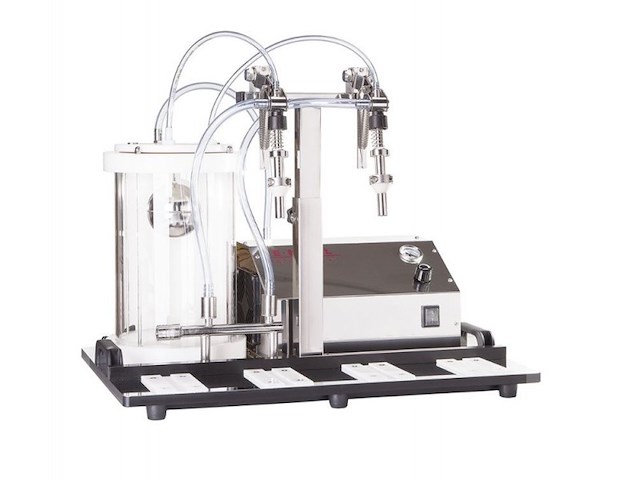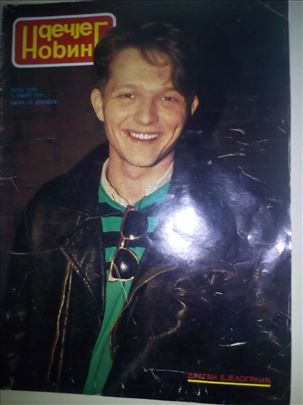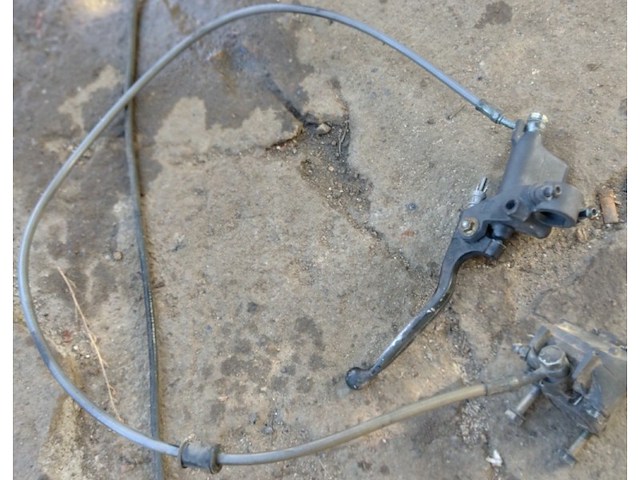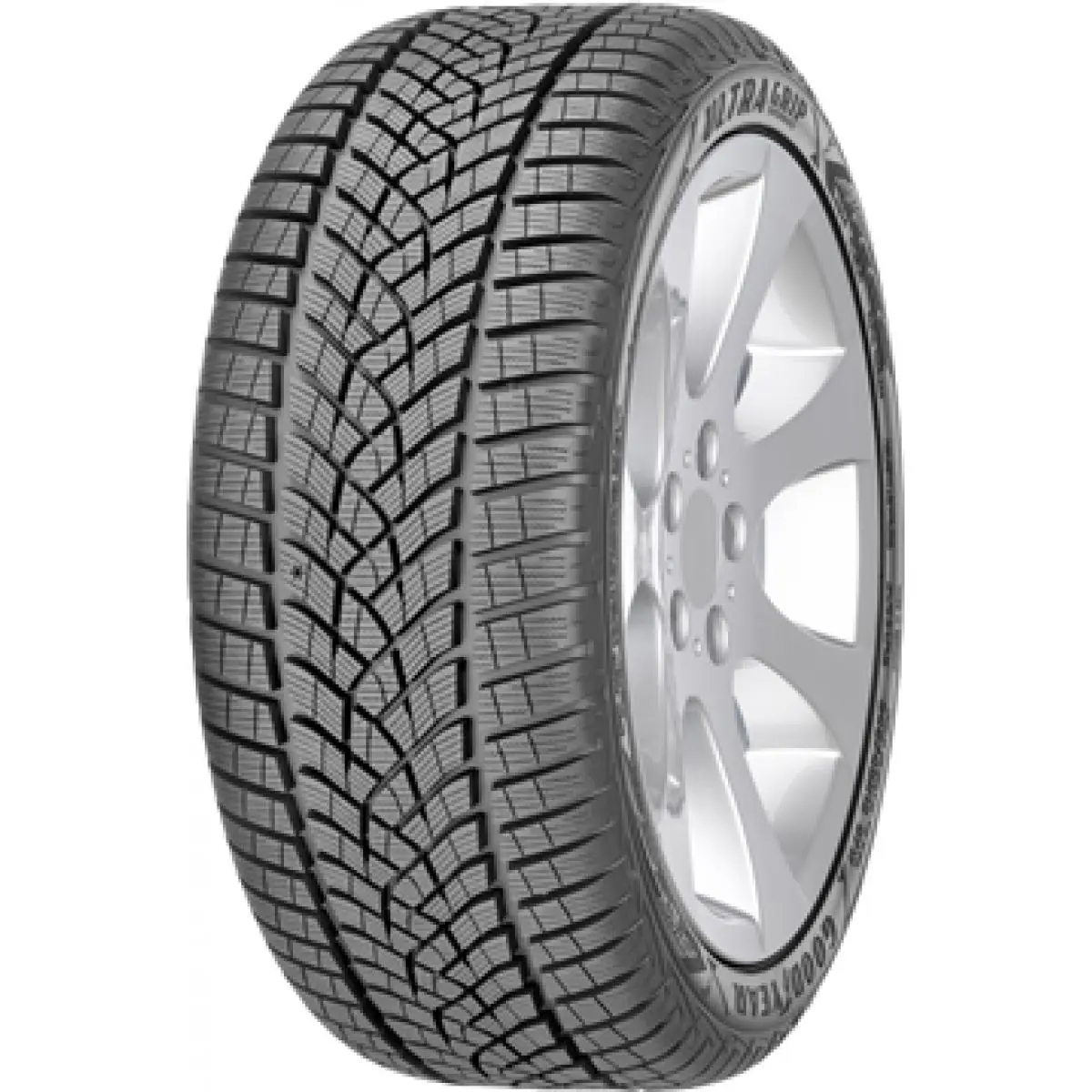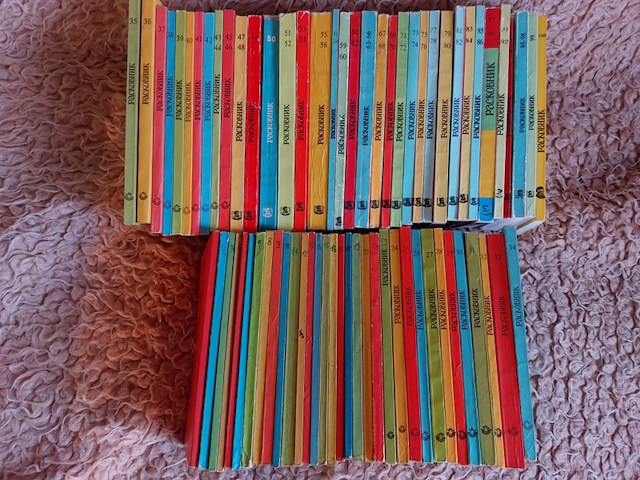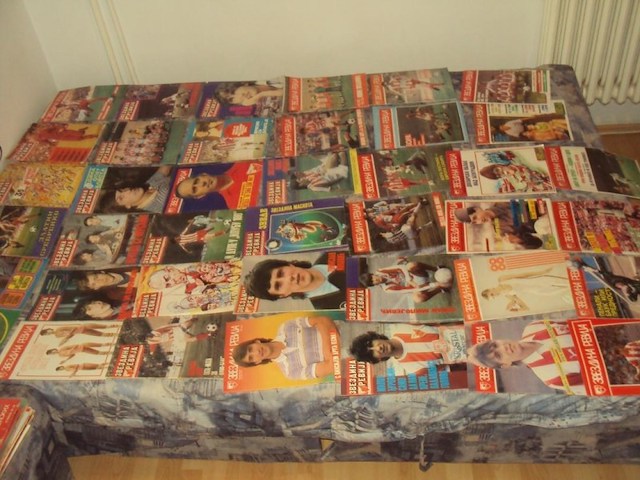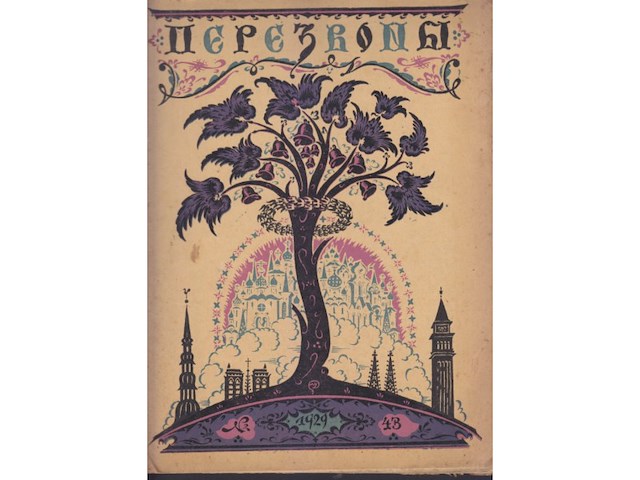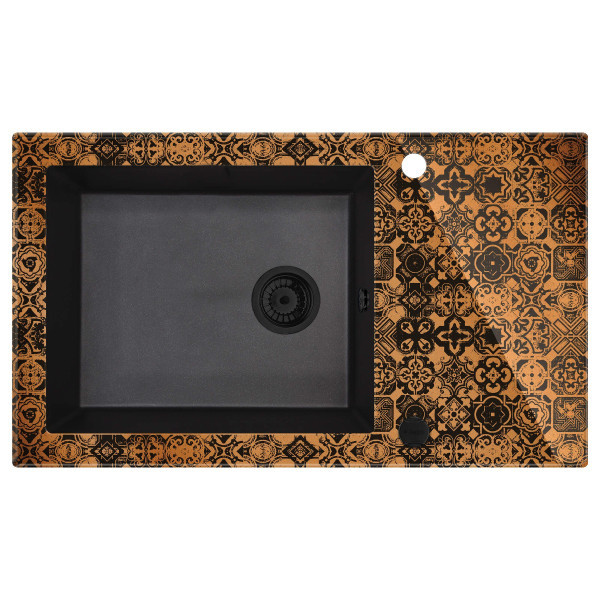Pratite promene cene putem maila
- Da bi dobijali obaveštenja o promeni cene potrebno je da kliknete Prati oglas dugme koje se nalazi na dnu svakog oglasa i unesete Vašu mail adresu.
1-25 od 288 rezultata
Režim promene aktivan!
Upravo ste u režimu promene sačuvane pretrage za frazu .
Možete da promenite frazu ili filtere i sačuvate trenutno stanje
-
Vozila i delovi chevron_right Delovi i oprema
Gumeni čamac SEAL - 320 Classic (3.2 m), aluminijumski pod. Novo. `SEAL Company` d.o.o., se bavi prodajom čamaca na naduvavanje i RIB u Crnoj Gori. U 2020 godine mi smo otvorili predstavništvo u Beogradu. Čamci SEAL su izrađeni od najkvalitetnijih materijala. Nemačko 5-slojno PVC platno. Aluminijumski pod. Za sedišta i krmu mi koristimo specijalno izrađenu za čamce i jahte laminiranu vodootpornu pomorsku šperplocu. Čamac ima CE sertifikat i svu potrebnu dokumentaciju za registraciju. Karakteristike čamca: Ukupna dužina: 320 cm Ukupna širina: 145 cm Dužina kokpita: 229 cm Širina kokpita: 65 cm Prečnik tubusa: 40 cm Broj sekcija u tubusu: 3 + kobilica Debljina PVC platna: 0,7 mm Gustina PVC platna: 850 gr/m2 Nosivost: 450 kg Putnici: 4 Ukupna težina: 52 kg Visina krme: 39 cm Snaga motora: do 10 ks Dimenzije pakovanja: Torba sa čamcem: 90х65х30 cm Torba sa podom: 80x65x10 cm Oprema: Čamac (tubus); torba za pakovanje čamca; pajole (tvrdi pod); torba za pakovanje pajole; stringer; torba za pakovanje stringera; klupa (sedište); vesla aluminijumska; nožna pumpa; adapter za ventil; set za servisiranje (zakrpa i lepak); priručnik. Garancija: Na zalepljene šavove tubusa čamca – 24 meseca. Na furnituru i podove (pajole, klupe) – 12 meseci. U cenu je uračunat PDV.
-
Vozila i delovi chevron_right Delovi i oprema
Drvena pedalina, spremna za koriscenje. Nema ostecenja. Vrseno je podsivanje iste, farbanje. Uz pedalinu idu gratis kolica na kojima stoji. Pedalina se nalazi u Bezdanu (opstina Sombor)
APARAT ZA ESPRESO KAFU INTUITION ESSENTIAL EA870810 Priprema kafe koja vam ulepšava dan Dopustite da vas vodi ekskluzivni osvetljeni sistem obaveštenja, sa kontrolnim panelom koji je jednostavan za upotrebu, koji stavlja sve vaše omiljene napitke na dohvat ruke i olakšava vam put do savršenih rezultata, istovrmeno vam omogućavajući jednostavno održavanje aparata Zahvaljujući KRUPS Thermoblock Compact sistemu, temperatura se brzo podiže kako biste uživali u vrućoj kafi još od prve šoljice. Kraći sistem distribucije vode sprečava gubitak temperature. Zahvaljujući 15 različitih unapred programiranih recepata automatski Krups aparati za espresso vam nude sve napitke koje možete poželeti: aromatični espresso, savršeni cappuccino, mogućnost pripreme dve ukusne kafe latte istovremeno, kao i različite napitke na bazi čaja sa različitim izborom temperatura. Napravite savršeni ristretto ili espresso zahvaljujući automatski podešenom mlinu ili ručno podesite mlevenje prema svom ukusu: 3 različita podešavanja od finog mlevenja za kompaktni espresso do grubog mlevenja za slabije kafe. Materijal od kog je izrađen obezbeđuje izdržljivost i dugotrajne performanse. Uživajte u espressu od sveže samlevenih zrna kafe, za savršenu aromu. Sadrži intuitivni OLED displej sa tasterima osetljivim na dodir, kako biste savršene rezultate dostigli lako i jednostavno. Na ovaj način, imate kontrolu u svakom segmentu pripreme svog omiljenog napitka KRUPS Quattro Force optimizuje svaki korak procesa pripremanja espresa od zrna do šoljice: 20% brže mlevenje*, izuzetno sabijanje, izvanredna perkolacija i napredno ceđenje, i sistem automatskog ispiranja nakon svake upotrebe za dugotrajne performanse. * U poređenju sa postojećim mlinovima integrisane u druge automatske espresso aparate istog proizvođača Potpuno nov dizajn Krups automatskih aparata za espresso donosi novo iskustvo pripreme i posluživanja kafe. Rezervoar za vodu zapremine 2.3L i rezervoar zrna kafe od 260g savršeno se uklapaju u optimalne, ergonomske dimenzije ovog aparata. Tehnologija Quattro Force Snaga: 1450 W Maksimalni radni pritisak: 15 bara Kapacitet rezervoara za vodu: 3 l Rezervoar kafe u zrnu: 250 g Mlin od nerđajućeg čelika Kapacitet u šoljama: 2 šoljice LED displej u boji s realnim ikonama Sposobnost čuvanja recepata u memoriju uređaja Podesite količinu kafe po porciji Programiranje količine pića po porciji Istovremeno priprema 2 šoljice kafe Mogućnost pravljenja kapućina jednim dodirom Elektronsko podešavanje visine ležišta za čaše Automatski sustav čišćenja korištenjem tableta Program za automatsko uklanjanje kamenca Materijal kotla: nerđajući čelik Materijal kućišta: ABS plastika Dimenzije: 440 x 280 x 400 mm Težina: 8,15 kg Boja: crna
30043 Inox bačve su prvenstveno namenjene za čuvanje vina, rakije, mleka, meda, kao i za korištenje u kompletnoj prehrambenoj industriji. Posude su izrađene od kiselootpornog inoxa, koji je namenjen za čuvanje rakije, vina i sokova. Imaju mnogo prednosti u poređenju sa klasičnim drvenim buradima: - Jednostavno čišćenje - Inox ne upija mirise različitih vrsta vina - Relativno mala težina u odnosu na zapreminu bureta - Iznad tečnosti nikada nema vazduha, uprkos tome se bure prazni, to omogućava plovak koji se spušta zajedno sa nivoom vina - Bure je estetski dizajnirano i krasi prostoriju u kojoj se nalazi Debljina lima: 1.2mm Prečnik bureta: 1100 mm Visina bureta: 1800 mm Slavine: 1` i 3/8` Ispust: 1` Proizvodjač: Ezio Inox
30041 Inox bačve su prvenstveno namenjene za čuvanje vina, rakije, mleka, meda, kao i za korištenje u kompletnoj prehrambenoj industriji. Posude su izrađene od kiselootpornog inoxa, koji je namenjen za čuvanje rakije, vina i sokova. Imaju mnogo prednosti u poređenju sa klasičnim drvenim buradima: - Jednostavno čišćenje - Inox ne upija mirise različitih vrsta vina - Relativno mala težina u odnosu na zapreminu bureta - Iznad tečnosti nikada nema vazduha, uprkos tome se bure prazni, to omogućava plovak koji se spušta zajedno sa nivoom vina - Bure je estetski dizajnirano i krasi prostoriju u kojoj se nalazi Debljina lima: 1.2mm Prečnik bureta: 1100 mm Visina bureta: 1800 mm Slavine: 1` i 3/8` Ispust: 1` Proizvodjač: Ezio Inox
-
Vozila i delovi chevron_right Delovi i oprema
Na prodaju motocikl Jawa RS 90 ccm - VETERAN,1971. GODISTE, Motocikl stoji svo vreme u garazi, najstartniji serijski 2T motocikl u klasi, ekonomican i udoban, 9,5 ks/6500 o/min.5-stepeni menjac, magnetno paljenje(bez akumulatora), velicine tomosa apn 4/6, sitan kvar, ukupno ulaganje oko 30000 din.(sa prenosom, popravkom i registracijom). Ja sam Vlasnik 1/1. Prenos obavezan i na teret Kupca. Zapoceta restauracija, pa je motocikl rasklopljen u delove. Zbog nedostatka vremena, ista sporo napreduje. Na slikama 2 i 3 u oglasu mozete videti kako izgledaju tockovi, cije je sredjivanje pri kraju. Od delova nedostaje: - (zadnji deo zadnjeg krila (kupljeno u medjuvremenu)) - (pak - treger - kupljeno u medjuvremenu), - stop svetlo od jawe, (imam, ali nije original od ovog modela) , - cep rezervoara nije original, - sajle. Ostalo je sve na broju. Delovi se nalaze u nekoliko kutija, zbog toga nisam slikao sve. Poseduje urednu dokumentaciju (tojest `papire`, kako to neki zovu), moze se registrovati (nakon sklapanja/popravke/prenosa). Preuzimanja iskljucivo licno kod mene. Svi troskovi na Vas teret (prevoz (kombi, kamionet i sl.), utovar...)
-
Vozila i delovi chevron_right Delovi i oprema
Uvezen iz Francuske, auto u odlicnom stanju, uradjen veliki servis, bez ulaganja,Emisiona klasa motora Euro 4 Pogon Prednji Menjač Manuelni 5 brzina Broj vrata 4/5 vrata Broj sedišta 5 sedišta Strana volana Levi volan Klima Automatska klima Boja Siva Materijal enterijera Štof Boja enterijera Siva Registrovan do 09.2020. Poreklo vozila Domaće tablice Vlasništvo Vodi se na prodavca Oštećenje Nije oštećen Metalik boja Branici u boji auta Servo volan Daljinsko zaključavanje Putni računar Panorama krov Električni podizači Električni retrovizori Grejači retrovizora Svetla za maglu Senzori za svetla Senzori za kišu Parking senzori Radio CD--mp3 Grejači vetrobranskog staklaAirbag za vozača Airbag za suvozača ABS ESP Blokada motora Centralno zaključavanje ,CENA NIJE FIKSNA
35026- 1100L - tri ventila - 82000din. Izuzetno kvalitetna i dugotrajna burad za vino od slovenackog proizvodjaca ZOTTEL. Takodje u ponudi imamo i INOX burad za rakiiju pa pogledajte u nasem oglasima. Posude su izrađene od kiselootpornog inoxa, koji je namenjen za čuvanje racije, vina i sokova. Imaju mnogo prednosti u poređenju sa klasičnim drvenim buradima: - Jednostavno čišćenje - Inox ne upija mirise različitih vrsta vina - Relativno mala težina u odnosu na zapreminu bureta - Iznad tečnosti nikada nema vazduha, uprkos tome se bure prazni, to omogućava plovak koji se spušta zajedno sa nivoom vina - Bure je estetski dizajnirano i krasi prostoriju u kojoj se nalazi .
63236 Kvalitetna italijanska punilica za flaše sa profesionalnim karakteristikama. Kapacitet: 300 flaša/h Koristi se za punjenje vina, alcoholnih pića, soka od paradajza, vočnih sokova i tečnosti sa visokim viskozitetom. Zahvaljujući dobro osmišljenom dizajnu i najvišem kvalitetu upotrebljenih materijala, Enolmaster je pogodan za upotrebu u punjenju svih tečnih prehrambenih proizvoda. Enolmaster je veoma jednostavan za korišćenje. Opremljen je brojnim praktičnim funkcijama: - Možete podesiti nivo punjenja bočice, - Možete podesiti brzinu punjenja bočice, - Enolmaster se može koristiti za popunjavanje bilo koje vrste i veličine boca. Zahvaljujući upotrebi vakuma, tečnost koja se uliva u bočicu ne dolazi u kontakt sa svojim mehaničkim elementima. Nivo punjenja se može podesiti: nakon odabira, uređaj automatski popunjava flašice do željenog nivoa. Proizvodjač: Enolandia Italija
-
Kolekcionarstvo i umetnost chevron_right Knjige
Dečje novine - Dragan Bjelogrlic - Nindza Kornjace Veoma retko i raritetno izdanje iz 1991. godine. Teme: Na tragu prirode. Siroko Srce. Priroda i drustvo. Kalendar istorijskih dogadjaja. Odabrane price, pesme... Grigor Vitez. Mitska bica nasih predaka. Mitovi i legende - Antlantida, el Dorado. Kultura ponasanja. Sa nasim reporterom po Svetu. Kompjuterski leksikon. Pronalasci za civilizaciju. Strip pokretna konjusnica. Spomenak. Stubac Zaljubac. Skoloskop. Astrologija. Sport - Robert Prosinecki natrazeniji fudbaler evrope, nasi najbolji u skoku u vis. Saobracaj. Eureka: Smeh divljeg Zapada. Misaone igre: Ukrstene reci, osmosmerka, skriveni crtez, lavirint, rebus uoci razliku, morske ribe u osmosmerci...
-
Vozila i delovi chevron_right Delovi i oprema
KOMPLETNA PREDNJA KOCNICA U ISPRAVNOM STANJU SKINUTA SA PEZO ELISEO 99 GODISTE 50 KUBIKA DVOTAKTNI...
-
Vozila i delovi chevron_right Delovi i oprema
HCMS906T2580A-Kardansko vratilo Mercedes Sprinter-Volkswagen Crafter L = 2580mm- L1=1065mm -zamenski rezervni deo
-
Vozila i delovi chevron_right Delovi i oprema
Original Abarth Turismo alu felne 17 inča, 4x98, et38, u kompletu sa sva 4 original centralna poklopca i sa Michelin Pilot Sport 4 gumama 205/40 R17 dot 2019. Set je u izuzetnom stanju.
-
Kolekcionarstvo i umetnost chevron_right Knjige
Tajne japanske astrologije KIGAKU Znati kako upravljati sopstvenim telom i zdravljem, znati kako urediti odnose sa ljudima, i znati kako usmeriti sreću i sudbinu, tri su umeća koja će biti sudbonosna za vreme koje je pred nama. Rak, nova bolest sida, stres, duševna nestabilnost, u nastupajućem vremenu najviše će pretiti našem telu i duhu. Da izbegnemo bolesti i sačuvamo stabilnost duha, poslužiće nam znanje o devet zvezda – kjusei, koji se jednostavno naziva KIGAKU. Ljudi ne mogu ni da žive ni da rade sami. U svim sredinama u kojima provode vreme sa nekim, harmonija je veoma važna. Nebeska energija, primljena rođenjem, prati nas kroz čitav život i u svim njegovim vidovima. Energija drugihje takođe uvek sa njima, tako da, kada se susrećemo sa ljudima, potiranje te energije, njeno pojačavanje ili jednostavno mimoilaženje, određuje godina i vreme kad smo se rodili. Da li smo izabrali dobre životne saputnike, dobre saradnike, da li se družimo sa pravim ljudima i kakve su nam zajedničke sudbine predodređene, može nam otkriti jedna od nauka „devet zvezda“ – KIGAKU. Da pronađete najboljeg partnera za ljubav, brak, druženje, putovanje, zajednički rad, zabavu, pomaže vam drevna japanska knjiga KIGAKU. 1100 Din
-
Vozila i delovi chevron_right Delovi i oprema
Opis proizvoda • Konekcija: Tip 2 (IEC 62196-2) • Snaga: 7.4 kW 32A • Povezivanje: Monofazna struja • Duzina kabla:5m • Displej: Da • Dimenzije: 460 x 315 x 135 mm • Tezina: 4.8kg Ostalo: • Wi-Fi, T2 socket,RCD-A 1P,smart funkcije
-
Vozila i delovi chevron_right Delovi i oprema
Opis proizvoda Goodyear Zimska guma 275/35R21 UG PERF+ 103V
-
Vozila i delovi chevron_right Delovi i oprema
HCMS906T2843 Kardansko vartilo Mercedes Sprinter-Volkswagen Crafter L=2843mm L1=1131mm-zamenski rezervni deo
Jedinstveno na tržištu. `Trenutno` postoji mogućnost korekcije cene jer je malo bolja cena materijala. Produbljeni model za dodavanje šamotne opeke. Kreiranje roštilja po meri Vatrootporni materijali. Vezano CO2 varenjem. Rešetka od firiketa 10x10mm, može minimalna doplata i za 12mm firiket. 4 nezavisne rešetke. Dubina povećana za debljinu šamotne cigle. Lim 3mm Ram od čeličnih cevi debelozidih. Bočna ručka za laku manipulaciju i pomeranje čak i kada je upaljen. 4 točka u `kvalitetu` sa dve kočnice da se ne pomera ni milimetar tokom korišćenja. Sprečava nenamerno ili namerno pomeranje. Dimenzija 2000x700 - stojeći stav. Profesional ketering. Namena: Za ketering ili za prestižni ukras u svom dvorištu. Rok trajanja: Neograničeno. Otporan na grubi transport. Nepoderivo. Gratis obojeno u crnu metalik nemačku skupu MATTE boju. Termo otpornu. Tipski roštilji: 200mm x 400mm je 6500 rsd. 400mm x 400mm je 8000 rsd. 515mm x 400mm je 9000 rsd. 625mm x 400mm je 12000 rsd. 515mm x 300mm je 9000 rsd. 300mm x 300mm je 5500 rsd. 200mm x 300mm je 5000 rsd. 800mm x 600mm je 22000 rsd 2000mm x 600mm je 35000 rsd. 3mm lim 1000mm x 500mm je 28000 rsd. 3mm lim 2000mm x 700mm je 42000 rsd. 3mm lim 2000mm x 1000mm je 60000 rsd. 3mm lim tri pregrade Sam uvlači potreban vazduh. Može da primi 3-5kg mesa po postavci. Peče savršeno i profesionalno uz minimalno angažovanje. Peče praktično sam. Doplata za farbanje termootpornom bojom je 800 rsd. Boje mogu srebrna, crna i zlatna. U pitanju su boje na bazi čestica aluminijuma. Plaćanje 1000 ~ 2000 rsd avans. Rok izrade do 4 radna dana. Isporuka kurirskom službom, autobusom, lično. Podržavamo i Western Union plaćanje. Održavanje: Pre upotrebe se opere kuhinjskom žicom (ili žičanom četkom ko ima) i čist sudomilom (najbolje Taš). Ispere običnom vodom. Posle upotrebe se ne čisti do naredne upotrebe jer masnoća štiti čelik od atmosferilija (ili se namaže mašću ili lojem, nikako uljem). Takođe izrađujemo sve mere porodičnih roštilja, ketering roštilja, rešetki za zidane roštilje, korita za zidane roštilje. . . +20 godina iskustva, 100% zadovoljnih kupaca. Naši roštilji za kućnu upotrebu su pravi. Profesionalni. Ovo nema na našem tržištu. Rok trajanja je nograničen. Lično koristimo sličan model. Vreme montaže oko 60 sekundi. Vreme demontaže oko 30 sekundi. Demontažni nogari dužine 50/75/100cm prema želji. Ista je cena. Skidaju se na leptir. ░P░O░G░L░E░D░A░J░T░E░░░S░V░E░░M░O░J░E░░░O░G░L░A░S░E░
Retko u ponudi,Casopisi Zvezdina revija Dobro ocuvano. Prodaja isključivo u kompletu . Brojevi iz 1990 g.- 405 , 410,414 Brojevi iz 1991.g.-417,420,423,424,425,428, Brojevi iz 1992- 429 (losije korice),430 Brojevi iz 1995.g.-450 Brojevi iz 1997.g.-467,468,476,475, Brojevi iz 1998.g.-484,487,483,485 Brojevi iz 1999.g.-489,491,495,497, Brojevi iz 2000.g.- 502,499,504,503,505, Brojevi iz 2001.g.-508,509,512,514,515, 517/518 dvobroj,516 Brojevi iz 2002.g.-524,526,522,527,520,519,525, Brojevi iz 2003.g.-528,531,532,533,536,530,534,535, Brojevi iz 2004.g-542,544,543,541,538,539,537,540, Brojevi iz 2005.g.-548,546,549,545,547,551, Brojevi iz 2008.g.-576 Brojevi viz 2009.g.-578 Brojevi iz 2011.g.-594 Brojevi iz 1989. g.-393,396,398,400,401,402,403,404, Brojevi iz 1988-382,384,386,389,391, Brojevi iz 1987g.-380,374,371, Brojevi iz 1986.g-363,385,368,366,364,362,367,361, Brojevi iz 1985 g.-346,349,350,352,354, Brojevi iz 1984.g.-334,336,341, Brojevi iz 1983.g.-327,331,333,318, Brojevi iz 1982.g.-318,319,320,316,322,324, Brojevi iz 1981 g.-304,305, 306,309,310,311,313,314,315 Brojevi iz 1980.g.-294,295,296,302,303, Brojevi iz 1975.g.-238 , losije korice.. Brojevi iz 1973.g.- 220,219,218,215,214,213,212,211,208,207,206,205,204,203,202, 201,200. Brojevi iz 1972.g.-191,195,192,186,187,189,188,185,184,183,196,194,193 NAPOMENA-CASOPISI IZ KOJIH SU IZVADJENI POSTERI,BROJEVI-523,307,506,507,510,433,392,490,452,498,501,451,558,504,500, 492. Visina postarine zavisi od nacina slanja
ovo je lot od 32 broja ruskog knjizevno - umetnickog casopisa PEREZVONI (zvona) tacnije 31 sveska - brojevi 7 i 8 su izasli kao dvobroj ruska emigracija u latviji - riga izdavac : salamander naslovna strana : ilustracija M. Dobuzhinsky format : 29,5 x 22,5 cm, tezina oko 4 kg stanje lose. nedostaju pojedine reprodukcije, fleke nepoznato mi je koliko je brojeva izaslo. ovde (od 1 do 43) nedostaju brojevi : 1,3,9,12,14,18,20,23,25,26,30 i 33. rusija, emigracija,periodika samo srbija ove casopise ne saljem u inostranstvo serbia only I do not send these magazines abroad ---------------------------------- Било је потребно да прође стотину година да бисмо почели да се занимамо за Русе који су после 1918. дошли у наш град. Њихов утицај на развој друштва, науке, образовања и културе био је велики и зато је важно да сада, када је јавност заинтересована за ову тему, сазнамо праве чињенице о руској емиграцији у Србију. Велику победу у Првом светском рату Србија је несразмерно скупо платила јер се процењује да смо изгубили чак око 60 одсто мушке популације, између 1,1 и 1,3 милиона људи, односно трећину укупног становништва. Таква изнурена, рањена и сељачка Србија ушла је 1918. године неспремна у државну заједницу са Словенијом и Хрватском, које нису претрпеле ратна разарања и биле су привредно напредније. Сматра се да је око два милиона Руса напустило своју земљу после Октобарске револуције и пораза у грађанском рату. Око 40.000 дошло их је у Краљевину Срба, Хрвата и Словенаца, највише у Београд и друге веће српске градове. Краљ Александар је руске емигранте дочекао раширених руку због посебног односа са убијеним руским царем Николајем, који му је био кум. Уосталом, и краљ и принц Ђорђе били су руски кадети, а прича се да је Олга, једна од кћерки цара Николаја, била обећана југословенском монарху за супругу. Какав је однос руска царска породица имала према Александру Карађорђевићу говори и чињеница да је Марија Фјодоровна, мајка цара Николаја, завештала југословенском монарху икону Пресвете Богородице Филермоса, коју је насликао свети апостол Лука, шаку Светог Јована Крститеља и делић Часног крста. Те светиње предате су краљу Александру 1928. године после смрти руске царице у Копенхагену, а чуване су у посебној крипти на Белом двору. О структури руских емиграната сведоче подаци које је објавио Николај Степанов, дипломирани историчар Државног универзитета у Нижњем Новгороду. Он наводи да је само на једном од бродова који је упловио у Боку било 30 генерала, професора, доктора. Према Степанову, више од половине придошлих Руса били су војна лица и државни службеници, око 30 одсто радило је у привреди, а 14 одсто су били предавачи, доктори, писци, свештенство и уметници, уз пет одсто административног кадра. Према овим подацима, њих 13 одсто имало је високу стручну спрему, а само три одсто било је без икаквог образовања. Веома брзо је на чело универзитетских катедри у Краљевини дошло чак 28 руских професора. Руски професори чинили су четвртину наставног кадра Београдског универзитета, а на Пољопривредном и Медицинском факултету чак половину. Основали су интерну клинику Медицинског факултета. Својој новој домовини Руси су дали дванаест акадмика Српске академије наука, попут Георгија Острогорског, једног од највећих византолога двадесетог века. Руски уметници обновили су балет и оперу Београдског народног позоришта, а најзначајнији су балерина Нина Кирсанова и сценограф Владимир Ждерински. Прву глумачку школу отворио је редитељ Јуриј Ракитин. Утицаји Ђорђа Лобачева на развој српског стрипа, Константина Константиновича Егера на развој мачевања, или сликара Степана Фјодоровича Колесникова на наше сликарство, били су непроцењиви. У Београду је радило више од педесет руских архитеката, међу којима су најзначајнији Николај Краснов, Сергеј Смирнов, Василиј Баумгартен, Јуриј Коваљевски, Роман Верховски, Валериј Сташевски и Василиј Андросов. Они су пројектовали велики број јавних зграда које постоје и данас, попут зграда Главне поште, Владе Србије, Министарства иностраних послова, старог Генералштаба, Белог двора, Патријаршије, Руског дома, Цркве Александра Невског и Цркве Свете Тројице. У Београду су издавани и превођени модерни руски писци као што су Борис Пиљњак, Данил Хармс, Иљф и Петров, који су били забрањени у СССР-у. За претежно неписмену земљу, чија половина становништва није знала да чита и пише, то свакако није била мала ствар. Рецимо, у Србију је дошло између 1.200 И 1.500 инжењера, а имали смо их око 500. Први декан машинског факултета био је академик Владимир Фармаковски. Први шеф пилота домаће авио-компаније „Аеропут“, претече ЈАТ-а и „Ер Србије“, био је Владимир Стрижевски, а за ту компанију летели су многи руски пилоти попут Михаила Јарошенка, Виктора Никитина и Леонида Бајдака. Бајдак је заједно са Тадијом Зондермајером 1927. године летео од Париза преко Београда до Бомбаја. Лет је у том тренутку био најдужи на свету, а организован је да би се јавност заинтересовала за акције компаније како би била купљена четири путничка авиона. Зондермајер је 1926. године био учесник последњег двобоја револверима у Србији, а противник му је био тада млади писац Милош Црњански. Руси су издавали своје возачке дозволе јер их Србија до њиховог доласка није имала, основали су такси службу и водили су све такси станице у Београду. ---------------------------------------------- White Russian émigrés were Russians who emigrated from the territory of the former Russian Empire in the wake of the Russian Revolution (1917) and Russian Civil War (1917–1923), and who were in opposition to the revolutionary Bolshevik communist Russian political climate. Many white Russian émigrés participated in the White movement or supported it, although the term is often broadly applied to anyone who may have left the country due to the change in regimes. Some white Russian émigrés, like Mensheviks and Socialist-Revolutionaries, were opposed to the Bolsheviks but had not directly supported the White Russian movement; some were apolitical. The term is also applied to the descendants of those who left and who still retain a Russian Orthodox Christian identity while living abroad.[citation needed] The term `émigré` is most commonly used in France, the United States, and the United Kingdom. A term preferred by the émigrés themselves was first-wave émigré (Russian: эмигрант первой волны, emigrant pervoy volny), `Russian émigrés` (Russian: русская эмиграция, russkaya emigratsiya) or `Russian military émigrés` (Russian: русская военная эмиграция, russkaya voyennaya emigratsiya) if they participated in the White Russian movement. In the Soviet Union, white émigré (белоэмигрант, byeloemigrant) generally had negative connotations. Since the end of the 1980s, the term `first-wave émigré` has become more common in Russia. In East Asia, White Russian is the term most commonly used for white Russian émigrés, even though with some being of Ukrainian and other ethnicities they are not all culturally Russians. Most white émigrés left Russia from 1917 to 1920 (estimates vary between 900,000 and 2 million), although some managed to leave during the 1920s and 1930s or were expelled by the Soviet government (such as, for example, Pitirim Sorokin and Ivan Ilyin). They spanned all classes and included military soldiers and officers, Cossacks, intellectuals of various professions, dispossessed businessmen and landowners, as well as officials of the Russian Imperial government and of various anti-Bolshevik governments of the Russian Civil War period. They were not only ethnic Russians but belonged to other ethnic groups as well. Most émigrés initially fled from Southern Russia and Ukraine to Turkey and then moved to other Slavic countries in Europe (the Kingdom of Yugoslavia, Bulgaria, Czechoslovakia, and Poland). A large number also fled to Estonia, Latvia, Lithuania, Finland, Iran, Germany and France. Some émigrés also fled to Portugal, Spain, Romania, Belgium, Sweden, Switzerland, and Italy. Berlin and Paris developed thriving émigré communities. Many military and civil officers living, stationed, or fighting the Red Army across Siberia and the Russian Far East moved together with their families to Harbin (see Harbin Russians), to Shanghai (see Shanghai Russians) and to other cities of China, Central Asia, and Western China. After the withdrawal of US and Japanese troops from Siberia, some émigrés traveled to Japan. During and after World War II, many Russian émigrés moved to the United Kingdom, the United States, Canada, Peru, Brazil, Mexico, Argentina, Chile, Colombia, South Africa and Australia – where many of their communities still exist in the 21st century. Many, estimated as being between the hundred thousands and a million, also served Germany in the Wehrmacht or in the Waffen-SS, often as interpreters. White émigrés were, generally speaking, anti-communist and did not consider the Soviet Union and its legacy to be representative of Russia but rather of an occupying force. They consider the period of 1917 to 1991 to have been a period of anti-Christian occupation by the Soviet regime. They used the pre-revolutionary tricolor (white-blue-red) as their flag, for example, and some organizations used the ensign of the Imperial Russian Navy. A significant percentage of white émigrés may be described as monarchists, although many adopted a position of being `unpredetermined` (`nepredreshentsi`), believing that Russia`s political structure should be determined by popular plebiscite. Many white émigrés believed that their mission was to preserve the pre-revolutionary Russian culture and way of life while living abroad, in order to return this influence to Russian culture after the fall of the USSR. Many symbols of the White émigrés were reintroduced as symbols of the post-Soviet Russia, such as the Byzantine eagle and the Russian tricolor. A religious mission to the outside world was another concept promoted by people such as Bishop John of Shanghai and San Francisco (canonized as a saint of the Russian Orthodox Church Abroad) who said at the 1938 All-Diaspora Council: To the Russians abroad it has been granted to shine in the whole world with the light of Orthodoxy, so that other peoples, seeing their good deeds, might glorify our Father Who is in Heaven, and thus obtain salvation for themselves. Many white émigrés also believed it was their duty to remain active in combat against the Soviet Union, with the hopes of liberating Russia. This ideology was largely inspired by General Pyotr Wrangel, who said upon the White army`s defeat `The battle for Russia has not ceased, it has merely taken on new forms`. White army veteran Captain Vasili Orekhov, publisher of the `Sentry` journal, encapsulated this idea of responsibility with the following words: There will be an hour – believe it – there will be, when the liberated Russia will ask each of us: `What have you done to accelerate my rebirth.` Let us earn the right not to blush, but be proud of our existence abroad. As being temporarily deprived of our Motherland let us save in our ranks not only faith in her, but an unbending desire towards feats, sacrifice, and the establishment of a united friendly family of those who did not let down their hands in the fight for her liberation. The émigrés formed various organizations for the purpose of combatting the Soviet regime such as the Russian All-Military Union, the Brotherhood of Russian Truth, and the NTS. This made the white émigrés a target for infiltration by the Soviet secret police (e.g. operation TREST and the Inner Line). Tens of White army veterans (numbers vary from 72 to 180) served as volunteers supporting Francisco Franco during the Spanish Civil War. Some white émigrés, labeled `Soviet patriots,` adopted pro-Soviet sympathies. These people formed organizations such as the Mladorossi, the Evraziitsi, and the Smenovekhovtsi. After 1933, there were attempts to copy the NSDAP and cozy up to the German National Socialists, thus the short-lived parties such as the ROND (Russian Popular Liberation Movement) came into existence in Germany. One of the most notable forms of activities by Russian émigrés was building monuments to Russian war dead of World War I, which stood in marked contrast to the Soviet Union, which did not build any monuments to the 2 million Russians killed between 1914 and 1917, as the war had been condemned by Lenin as an `imperialist war`. Besides for the war dead, other monuments were put up. In Brussels, Seattle, and Harbin, monuments were built to honor the executed Emperor Nicholas II while a monument was put up in Shanghai to honor Alexander Pushkin, Russia`s national poet. In fact, a monument to Pushkin would have been built in Paris had not a dispute arisen with the Ministry of Fine Arts over its precise location. The popularity of monuments for the war dead reflected not only sadness over the war dead, but also a way to bring together the often badly divided émigré communities shattered across Europe, Asia and North America. Monuments for the war dead were often a way to symbolically recreate Russia abroad with example at the monument for those Russians killed while serving in the Russian Expeditionary Force (REF) in France at village of Mourmelon-le-Grand having a hermitage built near it together with transplanted fir trees and a Russian style farm to make it look like home. To built community consensus around the war memorials, the design of the memorials were deliberately kept simple with no sculpture which could be given a symbolic meaning, thereby ensuring that no particular interpretation of the war could be put forward other than grief over the war dead. The design of Orthodox churches at the war memorials was done in the style of medieval Orthodox churches in Novgorod and Pskov as this architectural style was seen as politically neutral and hence able to bring the communities together better. Both left-wing and right-wing émigré who otherwise passionately disagreed came together to honor the war dead of World War I, which was virtually the only occasions when overseas Russian communities could all come together, explaining why such memorial services were so important to the émigré communities. The neo-classical style which typically adorned war memorials in Imperial Russia was consciously avoided as building a war memorial in that style was viewed as expressing support for restoring the monarchy. The sense of loss was not only for those the war monuments honored, but due to the sense of loss caused by defeat with a columnist in an émigré newspaper in Paris writing about the dedication of a memorial to the REF in 1930: `We lost everything - family, economic situation, personal happiness, the homeland...Are our sufferings good to anyone? In truth-we have nothing, we have lost everything. Weep, weep`. Such monuments were also a way of commanding respect from the host communities with an émigré newspaper saying in 1930: `Peoples honor heroes. To the living: care, to the dead: memory. We in a foreign land do not have a tomb of an `unknown soldier`, but we do have thousands of suffering people. They are our honor and our justification (opravdanie) before the world. Their wounds and suffering are for Russia. They remain true to honor and obligation. That is our Russian passport`. This was especially the case in France, the home of the largest overseas Russian community, where services honoring the events of World War I were a major part of French life after 1918, and where by honoring the Russian war dead allowed the Russian émigrés in France to take part in the ceremonials, letting the émigrés feel like a part of the wider French community. In 1927, the Orthodox Metropolitan Evlogii when he spoke at the war monument in Valenciennes: `Blood spilled on the soil of beautiful and glorious France is the best atmosphere to unite France forever with a Russia national and worthy`. The fact that the crosses of the Russians buried in France were painted white-the color of the French war dead and allies-while the crosses of the German war dead were painted black was widely noticed within the Russian community in France as a sign that the French regarded them as allies. In Czechoslovakia and Yugoslavia, war memorials to the Russian war dead were presented in Pan-Slavic terms, as a symbol of how Russians had fought together with the Czechs and Serbs in the war. Serbian King Alexander of Yugoslavia was a Russophile who welcomed Russian émigrés to his kingdom, and after France, Yugoslavia had the largest Russian émigré community, leading to Yugoslavia to have almost as many war memorials to the Russian war dead as France. War memorials in Yugoslavia usually also honored both Serbian war dead and the members of the Czechoslovak Legions who died in the war, giving them a decidedly pan-Slavic feel. A planned Orthodox church to honor the Russian prisoners who died in an Austrian POW camp outside Osijek would have featured busts of the Emperor Nicholas II, King Peter I and King Alexander to emphasis how the Houses of Romanov and Karađorđević had been allied in the war, linking the Russian and Serbian experiences of the war. Between 1934 and 1936, an ossuary containing the bones of Russian soldiers killed all over the world was built in the Novo Groblje cemetery in Belgrade, which used to illustrate the theme of Serbian-Russian friendship, and which King Alexander contributed 5,000 dinars to meet the construction costs. When the memorial was opened in 1936, the Patriarch Varnava of the Serbian Orthodox Church declared in a speech opening it: `The Russians bore great sacrifices on our account wishing to defend Serbs at a time when powerful enemies attacked tiny Serbia from all sides. And the great Slavic soul of the Russians did not allow it to be looked upon with indifference that a fraternal Slavic people should perish`. Karel Kramář, a wealthy conservative Czechoslovak politician and a Russophile worked together with Russian émigrés to build an Orthodox church in Prague which Kramář called in his opening speech `a monument of Slavic connection` and to `remind Russians not only of their former sufferings but also about the recognition on the side of the Slavs`. A service at the Russian war memorial in Terezin in 1930 turned into `a Russian-Czech political demonstration in a manifestation of Slavic mutuality` with the theme that the Russians had died so that the Czechs might be free. Prague had a large community of Russian émigrés, and by constantly linking the Russian experience of World War I to the experiences of the Czechoslovak Legions was a way of asserting that the Russians had helped to make Czechoslovakia possible. In Germany, right-wing émigrés found much to their own frustration that right-wing German veterans shunned their offers to participate in Totensonntag (`Day of the Dead`) as German conservatives did not wish to honor the sacrifices of those who had fought against Germany, and it was left-wing German veterans, usually associated with Social Democratic Party, who welcomed having Russians participate in Totensonntag to illustrate the theme that all peoples in the nations involved in the First World war were victims.[18] In Germany, November 11 was not a holiday as no one wanted to honor the day that the Reich lost the war, and Totensonntag played the same role in Germany that November 11 played in the Allied nations, as the time to honor the war dead. The anti-war and internationalist message at the Totensonntag ceremonies organized by the SPD did not sit well with right-wing Russian émigrés found themselves rather out of place at these ceremonies. The city of Harbin in China was founded by the Russians in 1896, becoming known the `Moscow of the Orient` due to its Russian appearance, and after the Revolution its Russian population was further reinforced by émigrés, through the majority of the Russians living in Harbin were people who had come before World War I. About 127,000 people living in Harbin in 1920 came from Russia, making it one of the largest Russian-speaking cites in East Asia. Many of the Russians in Harbin were wealthy, and the city was a center of Russian culture as the Russian community in Harbin made it their mission to preserve the pre-war Russian culture in a city on the plains of Manchuria with for instance Harbin having two opera companies and numerous theaters performing the traditional classics of the Russian stage. The economic success of the Russians in Harbin often surprised foreign visitors who assumed that they should be poor, leading one visitor in 1923 to comment that Russian “ladies as well gowned as at the Paris races [who] strolled with men faultlessly garbed by European standards”, leading him to wonder how they achieved this `deceptive appearance`. The extent of Russian economic dominance of Harbin could be seen that “Moya-tvoya`, a pidgin language combining aspects of Russian and Mandarin Chinese which developed in the 19th century when Chinese went to work in Siberia was considered essential by the Chinese merchants of Harbin. White émigrés fought with the Soviet Red Army during the Soviet invasion of Xinjiang and the Xinjiang War of 1937. During World War II, many white émigrés took part in the Russian Liberation Movement. The main reason that pushed the Whites to support the German power with action was the concept of a `spring offensive`, an armed intervention against the USSR that must be exploited in order to continue the civil war. The latter was perceived by many Russian officers as an ongoing case that was never finished since the day of their exile.[26] During the war, the white émigrés came into contact with former Soviet citizens from German-occupied territories who used the German retreat as an opportunity to either flee from the Soviet Union, or were in Germany and Austria as POWs and forced labor, and preferred to stay in the West, often referred to as the second wave of émigrés (often also called DPs – displaced persons, see Displaced persons camp). This smaller second wave fairly quickly began to assimilate into the white émigré community. After the war, active anti-Soviet combat was almost exclusively continued by NTS: other organizations either dissolved, or began concentrating exclusively on self-preservation and/or educating the youth. Various youth organizations, such as the Scouts-in-Exile became functional in raising children with a background in pre-Soviet Russian culture and heritage. The white émigrés formed the Russian Orthodox Church Abroad in 1924. The church continues its existence to this day, acting as both the spiritual and cultural center of the Russian Orthodox community abroad. On 17 May 2007, the Act of Canonical Communion with the Moscow Patriarchate reestablished canonical ties between the Russian Orthodox Church Abroad and the Russian Church of the Moscow Patriarchate, after more than 80 years of separation. White émigrés, called `White Russians` in East Asia, flooded into China after World War I and into the early 1920s. Most of the Russians went to Manchuria (especially in Harbin, which at the time had the largest population of Russians of any city outside Russia) and treaty ports such as Shanghai, but a few ended up in Beijing. In 1924, the Chinese government recognized the government of the Soviet Union and the majority of White Russians in China who refused to become Soviet citizens were rendered stateless, thus subject to Chinese law unlike other Europeans, Americans, and Japanese living in China who enjoyed the principles of extraterritoriality. Nor were White Russians born in China eligible to be Chinese citizens. Although some of the White Russians arrived with their fortunes intact, most were penniless and due to ethnic prejudices and their inability to speak Chinese, were unable to find jobs. To support themselves and their families, some of the younger women became prostitutes or taxi dancers. They were popular with both foreign men, there being a shortage of foreign women, and Chinese men. A League of Nations survey in Shanghai in 1935 found that 22% of Russian women between 16 and 45 years of age were engaging in prostitution to some extent. The White Russian women mostly worked in the `Badlands` area adjoining the Beijing Legation Quarter on the east, centered on Chuanban Hutong (alley). The American explorer Roy Chapman Andrews said he frequented the `cafes of somewhat dubious reputation` with the explorer Sven Hedin and scientist Davidson Black to `have scrambled eggs and dance with the Russian girls.` Some did find professional work, teaching music or French. Other women took work as dressmakers, shop assistants and hairdressers. Many men became career soldiers of the Shanghai Russian Regiment, the only professional/standing unit within the Shanghai Volunteer Corps. By slow degrees, and despite the many difficulties, the community not only retained a good deal of cohesion but did begin to flourish, both economically and culturally. By the mid-1930s there were two Russian schools, as well as a variety of cultural and sporting clubs. There were Russian-language newspapers and a radio station. An important part was also played by the local Russian Orthodox Church under the guidance of St. John of Shanghai and San Francisco. Approximately 150,000 White Russians, including princes, princesses, generals and senior officers, fled to the Ottoman Empire in the wake of the Revolution. Istanbul, which had a population of around 900,000 at that time, opened its doors to approximately 150 thousand White Russians. The parties to the war migration in 1917 were neither Crimean Turks nor Caucasian Muslims. This time, those who took refuge in Istanbul were the `nobles` and soldiers of Tsarist Russia, who had fought the Ottomans for centuries. The immigration, which started with small groups at the end of 1917, grew with the loss of Crimea to the Bolsheviks in 1920. Tens of thousands of people who left their titles, money and palaces in Russia and came to Istanbul tried to hold on to life by dispersing all over the city. Some sold books, some handcrafted souvenirs and some flowers. The place, formerly known as Hristaki Passage, became known as Çiçek Pasajı after the Russian flower girls took up residence. Russian refugees. Those who arrived in 1919 were better off economically. The first arrivals found some jobs in the French and British representations, commissions, or alongside them in civil service, translator, or even military or security units in Istanbul.
Deante sudopera Capella 86/CP/MGRA/O Boja : Bakarna / Metalik grafit Meterijal : Granit/staklo Broj korita sudopere : 1 Dubina korita : 20 cm Materijal sudopere : Granit Oceđivač : Da Širina korpusa za ugradnju : 60 cm Tip ugradnje sudopere : Standardna Dimenzije sudopere : 860 x 500 x 220 mm Odvod sudopere: 3,5 inča Daljinski podizač Naziv artikla: Deante Sudopera Capella 86CPMGRA0 Naziv i vrsta robe: Sudopere Uvoznik: Dostupno na ambalaži proizvoda Zemlja porekla: Dostupno na ambalaži proizvoda Prava potrošača: Zagarantovana sva prava kupaca po osnovu zakona o zaštiti potrošača Napomena: PB NITOM d.o.o. se trudi da cene, fotografije i opisi artikala budu što tačniji i kompletniji ali ne može da garantuje da su svi podaci apsolutno ispravni. Artikli predstavljeni na sajtu spadaju u našu ponudu i može se desiti da određeni proizvod nije trenutno dostupan. Sve cene su sa uračunatim PDV-om. Vaše ime Komentar Ocena: Pošalji KALKULATOR
